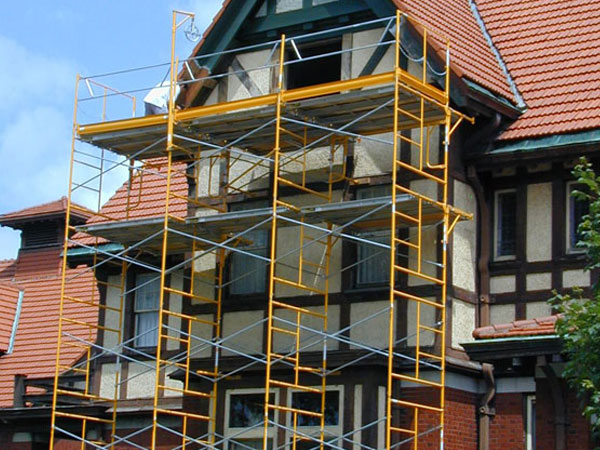Durable Scaffold Platforms: The Structure of Building And Construction Security
From Preparation to Dismantling: The Scaffolding Lifecycle ==========================================================
Managing the scaffolding lifecycle involves careful planning, budget allowance, and conformity with safety and security regulations. Style and design concentrate on architectural stability and safety requirements. Effective product purchase and setting up call for attention to information and adherence to safety and security procedures. Examination and maintenance guarantee compliance with safety standards, preventing costly repair services. The taking apart process needs extensive safety and security preventative measures and appropriate waste management practices. Additionally, examining recyclable products and reusing elements add to cost-effective usage and sustainability. Recognizing these phases is vital for making sure efficiency and security in scaffolding tasks. chimney scaffolding
Drawing board
Throughout the drawing board of the scaffolding lifecycle, meticulous attention to detail is important to guarantee the success of the task. Pre building control plays a crucial function in this stage, where all aspects of the scaffolding project are very carefully considered and arranged before any kind of physical work starts. This coordination includes communicating with numerous stakeholders, consisting of project supervisors, designers, and vendors, to protect seamless assimilation and communication throughout the task.
One of the key tasks during the drawing board is spending plan allotment. Setting a reasonable budget plan is important to stop cost overruns and hold-ups throughout the construction stage. By properly estimating the prices of products, labor, equipment, and other resources required for the scaffolding job, job supervisors can make certain that the job stays within spending plan restraints.
Effective preparation at this phase lays the structure for an effective scaffolding project, providing a roadmap for the subsequent stages of layout, design, construction, and taking apart. By adhering to thorough preparation methods and allocating sources carefully, task groups can mitigate dangers and optimize job outcomes.
Layout and Design
The process of style and design in the scaffolding lifecycle is crucial for guaranteeing structural honesty and security conformity throughout the job. When creating scaffolding, architectural security is a key problem. Designers should consider factors such as the height of the structure, the weight it will certainly birth, and ecological problems that may affect its security. Estimations for tons ability are crucial to determine the scaffolding's capability to sustain employees, devices, and materials safely.
Layout and engineering additionally play a vital duty in making sure that the scaffolding satisfies all pertinent safety criteria and regulations. By thoroughly preparing the design and products used, engineers can minimize risks of mishaps and make certain a secure working environment for all employees included. In addition, the style phase involves creating comprehensive drawings and plans that direct the building process, ensuring that the last framework satisfies the required specifications.
Material Procurement
Efficient procurement of products is vital for the effective implementation of scaffolding jobs. Establishing solid supplier partnerships is essential in making sure the timely shipment of high quality products. By working closely with suppliers, scaffolding companies can improve their procurement procedures, lower preparations, and attend to any kind of worldly quality problems immediately. Maintaining open communication networks with providers additionally enables better expense management, as it allows business to work out desirable pricing arrangements and safe discount rates for bulk acquisitions.
Expense monitoring plays a significant function in product procurement, as it directly influences the overall task budget. Scaffolding business should meticulously evaluate their product demands, contrast costs from different distributors, and seek cost-effective alternatives without compromising on top quality and security criteria. Implementing effective price administration approaches can help reduce job expenditures and enhance earnings margins. By focusing on solid distributor relationships and efficient cost management techniques, scaffolding companies can improve the performance and success of their jobs from the start.
Assembly and Erection
For effective scaffolding jobs, careful interest to detail throughout the assembly and erection procedure is vital. Safety and security methods have to be purely adhered to in order to assure the wellness of employees and the general success of the task. Before any assembly starts, a complete assessment of the site have to be performed to identify any kind of potential dangers or barriers that can influence the erection process.
When it involves erection methods, it is very important to comply with manufacturer standards and industry best methods. Each part needs to be safely attached, and the framework must be examined at various stages of the erection process to guarantee stability and stability. Appropriate sequencing of erection actions is important to avoid any kind of structural failings or mishaps. In addition, the use of correct devices and equipment, in addition to trained workers, is crucial for the secure and effective setting up of the scaffolding.
Examination and Upkeep
Integrating a methodical approach to evaluation and maintenance is essential for guaranteeing the longevity and safety and security of scaffolding structures. Safety checks play an essential role in determining any kind of prospective dangers or defects that can jeopardize the security of the scaffolding.
Routine inspections need to be carried out by certified workers to validate that the scaffolding remains in compliance with safety and security regulations and criteria. Preventative maintenance is equally vital to address any wear and tear, corrosion, or damage that may occur during the scaffolding's use. This proactive technique can aid stop crashes and ensure the architectural integrity of the scaffolding.
Implementing an upkeep routine that includes routine cleansing, lubrication of moving components, and architectural supports when required can considerably extend the life-span of the scaffolding. By focusing on security checks and preventative upkeep, building companies can maintain a safe working environment and prevent pricey repair services or replacements as a result of forget or oversight.
Taking apart Process
The taking down process of scaffolding involves essential safety and security preventative measures to assure the health of workers and spectators.
In addition, the appropriate disposal of taken apart parts is essential to keep a clean and orderly office.
Safety And Security Preventative Measures During Taking Down
During the taking apart procedure of scaffolding, focusing on precaution is essential to protect against crashes and maintain a smooth process. Security methods should be strictly adhered to throughout this phase to ensure the health of workers and the surrounding setting. Correct training on taking down procedures, including devices elimination strategies, should be given to all employees involved.
Prior to starting taking apart, a detailed evaluation of the scaffolding structure must be carried out to identify any kind of potential threats or issues that could endanger security. Additionally, the use of proper individual protective equipment (PPE) such as headgears, handwear covers, and harnesses is important.
Disposal of Dismantled Parts

To preserve a safe and orderly environment, the correct disposal of taken down parts after finishing the taking down process of scaffolding is vital. Waste management plays a vital duty in this phase, making sure that products are taken care of sensibly.
When taking into consideration disposal options, recycling is an essential selection that can help in reducing the ecological impact of building tasks. By setting apart products like steel components, wood planks, and other recyclable things, scaffolding companies can add to decreasing waste sent to garbage dumps.
In addition, discovering recycling alternatives for products such as steel and aluminum can not only profit the setting yet likewise potentially supply price financial savings by repurposing these materials for future projects.
Proper waste management practices are indispensable to completing the scaffolding lifecycle responsibly.
Examination After Taking down
Upon finishing the dismantling process of scaffolding, a detailed evaluation is carried out to evaluate the architectural honesty and security of the parts. This post-dismantling examination is essential to confirm that the scaffolding parts are in excellent condition and safe for future usage.
Throughout the assessment, each part is meticulously examined for any type of indications of damages, wear, or problems that might have taken place throughout the taking down process. Components that pass the assessment can be considered for reuse in future tasks, thereby taking full advantage of the cost-effectiveness of the scaffolding materials.
Regularly Asked Questions
Just how Does Climate and Environmental Aspects Impact the Scaffolding Lifecycle?
Weather durability is essential in the scaffolding lifecycle, as extreme problems can accelerate wear. Ecological aspects like wetness and UV exposure additionally influence longevity, boosting upkeep needs. Appropriate disposal of materials at the end of the lifecycle is vital for sustainability.
What Are Some Common Difficulties Dealt With During the Taking Apart Process of Scaffolding?
Difficulties ran into during the dismantling process of scaffolding consist of making certain safety and security, proper handling of products, and appraising parts for reuse. Making the most of reusability calls for meticulous planning, skilled labor, and adherence to safety protocols.
Exist Any Specific Regulations or Standards Regarding the Disposal of Scaffolding Materials?
Disposal regulations for scaffolding materials are vital to assure environmental conformity and safety. Several territories have details standards for proper disposal, advertising reusing options whenever possible to decrease waste and advertise sustainability in the building market.
How Do Precaution Differ During the Examination and Upkeep of Existing Scaffolding Frameworks Contrasted to Freshly Set Up Ones?
Security methods throughout assessment and maintenance of existing scaffolding structures focus on assessing wear, tear, and load ability to assure ongoing security. Unlike brand-new scaffolds, maintenance procedures involve appraising structural integrity and resolving potential hazards promptly.
Can Scaffolding Be Recycled for Future Projects, and What Variables Determine Its Reusability?
Scaffolding sustainability is improved by considering reusability elements. Components like material high quality, assessments, and adherence to policies influence whether scaffolding can be repurposed for future tasks, optimizing sources and promoting environmental obligation in building methods.
Conclusion
To sum up, the scaffolding lifecycle includes precise planning, design, product procurement, assembly, evaluation, maintenance, and taking down. Each phase is crucial for assuring the security and effectiveness of the structure.

By following a systematic approach from beginning to end, building and construction tasks can benefit from the assistance and security offered by scaffolding. Correct dismantling at the end of the project makes sure the secure elimination of the structure and minimizes any kind of possible threats.